Not far from Rome, in the village of Bomarzo, lies the eerie Park of Monsters, also known as the Sacred Grove. Created in the mid-16th century by Duke Pierfrancesco Orsini, this strange sculpture garden is filled with giant statues and bizarre structures carved from boulders. The park’s origins are mysterious—no one knows who designed or carved the sculptures. Some theories link the surreal statues to alchemy or the Eleusinian mysteries, with Persephone and Hades as key figures, while others suggest they represent the duke’s nightmares or life events. The park’s most iconic piece is the Hell Mouth, a cavern shaped like a monster’s gaping maw. After the duke’s death, the park became overgrown and forgotten for centuries, rumored to be a sinister place. Rediscovered by Salvador Dali after World War II, it opened to the public in the 1950s. Visitors leave the park unsettled by its creepy statues whose meaning is elusive. Five alluring novels, blending history, fiction, and fantasy propose exciting solutions to the riddle of Bomarzo.
1
This is the Grandfather of all Bomarzo novels, a classic by Argentinian novelist, Manuel Mujica Lainez, a contemporary of the great Borges, whose style and themes influenced Lainez’s narrative. Portraying the park’s founder as a perverse, vengeful, tormented hunchback, the author draws on the Renaissance passion for alchemy, magic, astrology, compressing decades of history into his story, enacted by a colorful cast of characters: alchemists, popes, emperors, courtesans, soldiers, and artists. Lainez describes the Monster Park as a projection of his protagonist’s warped mind – a vision in a delirium made real. The hero would also seem to be immortal, writing from the future, five hundred years later. A fascinating read you’ll find only at a library or used bookshop.
2
Partly inspired by Lainez’ classic, author Teresa Cutler-Broyles weaves two timelines together: one narrates the story of Duke Pierfrancesco, an alchemist, and how he came to create his Monster Park. A second timeline, nearly five centuries later, deals with Frank, a book collector, who finds a note addressed to him hidden in an ancient, rare edition of Dante’s Divinia Commedia. While visiting Bomarzo, Frank enters the Hell Mouth, falls through time, and wakes up in the middle of a pageant celebrating pagan rites. He is discovered by the artist Pyrrho Ligorio, who is working on the statues, and by his beautiful model, Lucrezia. Frank’s new friends must help him return to his own time period, but things get complicated when he and Lucrezia fall deeply in love. Meanwhile, the church authorities are clamping down on pagan celebrations, which disguise political opposition to the pope, and Frank and his friends risk being burned at the stake. The book blends solid historical research with fantasy.
3
USA Today best-selling writer of cozy mysteries, Gigi Pandian brews together fascinating historical research on the origin of the Bomarzo sculptures, local legends of buried treasure and paranormal activity with a classic story of murder and international crime. In this Jaya Jones treasure hunt mystery, sleuth Jaya sets off for Italy to investigate the death of a dear friend and professor who had made some exciting discoveries about a little known artist of the Renaissance. The artist, a disciple of Michelangelo, Lazzaro Allegri, had ties to India. Before dying, Jaya’s professor had found proof that a cache of Allegri’s amazing and now priceless artwork lies somewhere hidden in the Park of Monsters. Jaya must unravel the mystery of her friend’s death, while discovering all the secrets guarded by the monsters.The book is a delightful journey to Italy – with delicious food and magnificent landscapes, cliffhanging suspense and emotionally charged relationships, which reveal the tensions in Jaya’s personal life.
4
In this gothic mystery, four misfits converge in a decaying villa in Italy in 1928: Daphne, a writer of occult mysteries; Nigel, her aristocratic publisher; Clive, an aspiring painter; and Finestone, an academic. The villa is attached to a long-forgotten garden where the surreal, overgrown sculptures are being rediscovered. At the heart of the park stands a statue of Persephone, symbol of the Eleusinian mysteries, which once guided seekers toward self-knowledge and rebirth. Daphne believes that symbols all around us reveal the future and hidden truths. When a shocking murder occurs in the park, she becomes the prime suspect. To clear her name, Daphne must interpret the signs embodied by the grotesque statues, which she believes channel the dark emotions of the artist who created them. To unmask the killer, she must confront her own demons by passing through the ominous Hell Mouth and, in the process, unravel the cryptic message hidden within the park by its creator. Lappin provides fabulous descriptions of the sculptures and thought-provoking meditations on their meaning. Library Journal says “Moody romantic prose Daphne Du Maurier might have written. -Much to savor in this intelligent mystery."
5
In her newest novel, renowned food writer Crystal King assembles a cast of eccentrics, including artist Salvador Dalí, at a crumbling villa near the eerie Garden of Monsters. Julia, a young American art student, has been invited to pose for the famed Spanish painter. Struggling with amnesia, Julia can't recall her origins or how she ended up living in Rome. Hoping for answers, she accepts Dalí’s invitation to Bomarzo, sensing he may help uncover her past. The artists are attended by a peculiar group of servants who care for the villa, the park, and their enigmatic host, the charming Ignazio, to whom Julia feels an undeniable attraction. Ignazio, a master of culinary delights, prepares elaborate feasts for his guests, often featuring pomegranate seeds, which he persistently tries to coax Julia into eating—though she resists, until one pivotal moment.This enchanting and sensual reimagining of the Persephone and Hades myth is laced with tantalizing descriptions of food that will linger in your mind long after the final page.
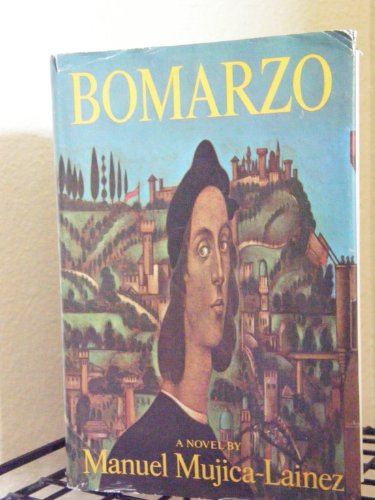
1
This is the Grandfather of all Bomarzo novels, a classic by Argentinian novelist, Manuel Mujica Lainez, a contemporary of the great Borges, whose style and themes influenced Lainez’s narrative. Portraying the park’s founder as a perverse, vengeful, tormented hunchback, the author draws on the Renaissance passion for alchemy, magic, astrology, compressing decades of history into his story, enacted by a colorful cast of characters: alchemists, popes, emperors, courtesans, soldiers, and artists. Lainez describes the Monster Park as a projection of his protagonist’s warped mind – a vision in a delirium made real. The hero would also seem to be immortal, writing from the future, five hundred years later. A fascinating read you’ll find only at a library or used bookshop.
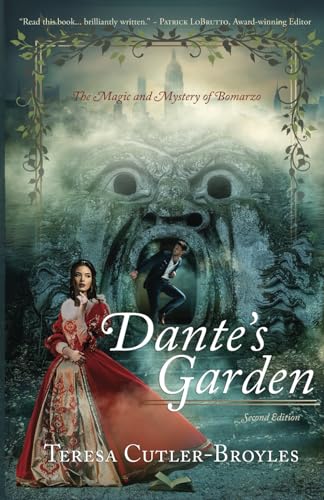
2
Partly inspired by Lainez’ classic, author Teresa Cutler-Broyles weaves two timelines together: one narrates the story of Duke Pierfrancesco, an alchemist, and how he came to create his Monster Park. A second timeline, nearly five centuries later, deals with Frank, a book collector, who finds a note addressed to him hidden in an ancient, rare edition of Dante’s Divinia Commedia. While visiting Bomarzo, Frank enters the Hell Mouth, falls through time, and wakes up in the middle of a pageant celebrating pagan rites. He is discovered by the artist Pyrrho Ligorio, who is working on the statues, and by his beautiful model, Lucrezia. Frank’s new friends must help him return to his own time period, but things get complicated when he and Lucrezia fall deeply in love. Meanwhile, the church authorities are clamping down on pagan celebrations, which disguise political opposition to the pope, and Frank and his friends risk being burned at the stake. The book blends solid historical research with fantasy.
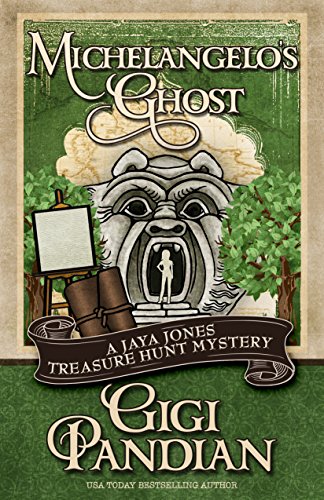
3
USA Today best-selling writer of cozy mysteries, Gigi Pandian brews together fascinating historical research on the origin of the Bomarzo sculptures, local legends of buried treasure and paranormal activity with a classic story of murder and international crime. In this Jaya Jones treasure hunt mystery, sleuth Jaya sets off for Italy to investigate the death of a dear friend and professor who had made some exciting discoveries about a little known artist of the Renaissance. The artist, a disciple of Michelangelo, Lazzaro Allegri, had ties to India. Before dying, Jaya’s professor had found proof that a cache of Allegri’s amazing and now priceless artwork lies somewhere hidden in the Park of Monsters. Jaya must unravel the mystery of her friend’s death, while discovering all the secrets guarded by the monsters.The book is a delightful journey to Italy – with delicious food and magnificent landscapes, cliffhanging suspense and emotionally charged relationships, which reveal the tensions in Jaya’s personal life.
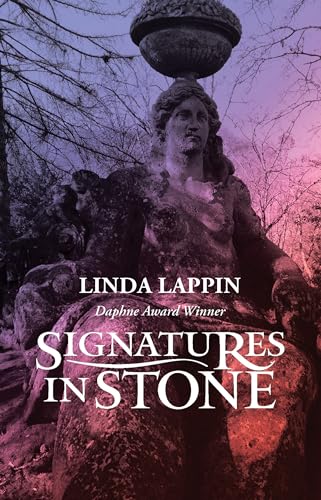
4
In this gothic mystery, four misfits converge in a decaying villa in Italy in 1928: Daphne, a writer of occult mysteries; Nigel, her aristocratic publisher; Clive, an aspiring painter; and Finestone, an academic. The villa is attached to a long-forgotten garden where the surreal, overgrown sculptures are being rediscovered. At the heart of the park stands a statue of Persephone, symbol of the Eleusinian mysteries, which once guided seekers toward self-knowledge and rebirth. Daphne believes that symbols all around us reveal the future and hidden truths. When a shocking murder occurs in the park, she becomes the prime suspect. To clear her name, Daphne must interpret the signs embodied by the grotesque statues, which she believes channel the dark emotions of the artist who created them. To unmask the killer, she must confront her own demons by passing through the ominous Hell Mouth and, in the process, unravel the cryptic message hidden within the park by its creator. Lappin provides fabulous descriptions of the sculptures and thought-provoking meditations on their meaning. Library Journal says “Moody romantic prose Daphne Du Maurier might have written. -Much to savor in this intelligent mystery."
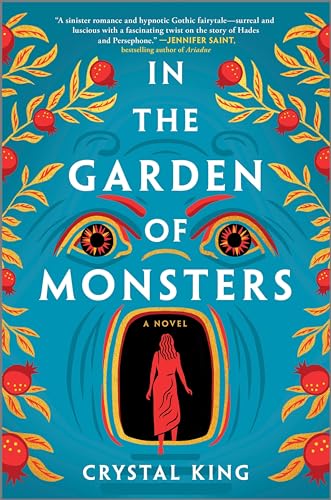
5
In her newest novel, renowned food writer Crystal King assembles a cast of eccentrics, including artist Salvador Dalí, at a crumbling villa near the eerie Garden of Monsters. Julia, a young American art student, has been invited to pose for the famed Spanish painter. Struggling with amnesia, Julia can't recall her origins or how she ended up living in Rome. Hoping for answers, she accepts Dalí’s invitation to Bomarzo, sensing he may help uncover her past. The artists are attended by a peculiar group of servants who care for the villa, the park, and their enigmatic host, the charming Ignazio, to whom Julia feels an undeniable attraction. Ignazio, a master of culinary delights, prepares elaborate feasts for his guests, often featuring pomegranate seeds, which he persistently tries to coax Julia into eating—though she resists, until one pivotal moment.This enchanting and sensual reimagining of the Persephone and Hades myth is laced with tantalizing descriptions of food that will linger in your mind long after the final page.
© Five Books 2025